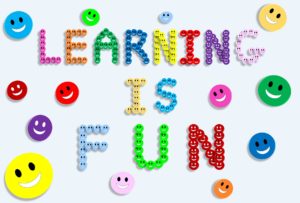 A lot of patience is needed to successfully teach a non-verbal child to read.
A lot of patience is needed to successfully teach a non-verbal child to read.
Good observation skills and collaboration with all the people involved in raising the child also helps a great deal.
Because of the nature of the condition, having the willingness to teach such a child can be considered as the most important requirement.
There are several steps that can be followed in order to help a child who is non-verbal to learn how to read.
These steps can be applied in a variety of ways or with other methods in order to achieve greater results.
Step 1
 Take time to observe the child.
Take time to observe the child.
Since you are unable to gain access to the child’s behavior via verbal communication, you need to collect data by watching the child’s behavior.
By doing so, you will be able to fully understand the child’s behavior, temperament, and body language.
This process cannot be rushed because each non-verbal child is different and you need to have to take your time.
Step 2
 Collaborating with the people involved with the child including parents and caregivers is one of the most important steps to take.
Collaborating with the people involved with the child including parents and caregivers is one of the most important steps to take.
This can also be quite tricky because, in many cases, parents and caregivers tend to withhold information about their child with special needs.
They sometimes to don’t the teachers to know about their child’s aggressive behavior or possesses some other type of extreme behaviors.
This is where collaborating with parent or guardian can be very beneficial as they all can work towards a common goal.
Step 3
 The teaching program can be implemented at this stage.
The teaching program can be implemented at this stage.
You can begin teaching the various components of learning for the non-verbal child.
Introduce the use of visuals, objects, as well as other generated resources that the child can have contact with.
You will be able to monitor comprehension at this stage and use that as a foundation on which new activities will be built.
Step 4
 Develop different routines for the non-verbal child.
Develop different routines for the non-verbal child.
Create routines that will help the child know exactly what to expect. You want to eliminate surprises as they don’t help.
Try to exercise patience especially with progress being made in comprehension.
Take into consideration the frustration that the child might have not being able to express their feelings, reasoning, and ideas.
Step 5
 Focus your activities on developing the child’s communication skills.
Focus your activities on developing the child’s communication skills.
A non-verbal child can communicate even though they can’t speak, so work more to improve their communication before moving on to advanced subjects.
Step 6
 Pay attention to all forms of the child’s behavior.
Pay attention to all forms of the child’s behavior.
Try to understand what they could want or try to say with a certain body language.
This will help them trust you and want to communicate with you more.
Step 7
 Gradually encourage the child to speak if they show signs that they are learning to use it.
Gradually encourage the child to speak if they show signs that they are learning to use it.
For instance, if a child features towards an object, say an orange, hold the orange up and say “orange.”
Encourage the child to say it after you.
Remember, you need a lot of patience to pull this off.
Step 8
 Respond to their behavioral issues with compassion.
Respond to their behavioral issues with compassion.
Children with special needs may act out in frustration.
Help them to calm down by using the following strategies:
- Chewing gum
- Deep breaths
- Self-to all
- Counting
Step 9
 Prevent bullying by all means.
Prevent bullying by all means.
Bullying should never be tolerated.
Studies have shown that non-verbal children are the usual targets of bullying.
Step 10
 Ensure that every activity is fun.
Ensure that every activity is fun.
Having the right mindset can make this a lot easier to achieve.
It is important to be an ally by working with the child in order to encourage them to learn how to read.

